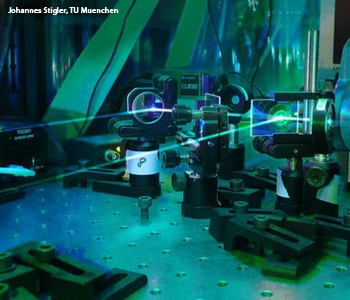Scatterings
Following Protein Folding
Researchers at the Technical University of Munich (Germany) used single-molecule force spectroscopy with ultrastable optical tweezers to measure the length of a single protein and the force required to cause a change in the folding state.
 Ultrastable, high-resolution optical tweezers manipulate a single molecule to investigate how proteins fold.
Ultrastable, high-resolution optical tweezers manipulate a single molecule to investigate how proteins fold.
Proteins fold like a complicated origami: Imagine long thin strips of paper that pleat according to an elaborate set of rules. We know that the way proteins tangle into 3-D arrangements determines how they interact with other molecules, but how they assemble remains a mystery. Is there only one route that leads to the correctly folded protein? What mechanisms control how it folds? Do multiple domains complicate folding? How does the energy state change as the structure changes? A new, single-molecule method could provide answers to many of our questions about protein folding.
…Log in or become a member to view the full text of this article.
This article may be available for purchase via the search at Optica Publishing Group.
Optica Members get the full text of Optics & Photonics News, plus a variety of other member benefits.
